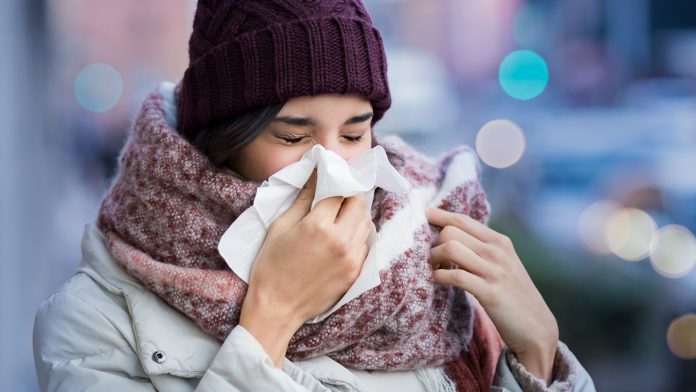
Lorna Rothery spoke to Dr Albert Osterhaus, expert virologist and Chairman of the European Scientific Working group on Influenza and other Respiratory Viruses about the burden of respiratory infections.
Founded in 1992, the European Scientific Working group on Influenza and other Respiratory Viruses (ESWI) endeavours to reduce the burden of respiratory illnesses by facilitating cross-disciplinary research and communicating with key stakeholders to raise awareness and improve public health. Lorna Rothery spoke to the ESWI’s Chairman and leading virologist Dr Albert Osterhaus about how COVID-19 has influenced the circulation of respiratory viruses and the key measures that could be taken to mitigate the threat of viral epidemics and pandemics.
What influence has the COVID-19 pandemic had on the circulation of the influenza virus, respiratory syncytial virus (RSV), and possibly other viruses? What implications could this have during the flu season?
In countries where serious measures were taken during the pandemic, we saw a significant reduction in annual infections. We barely had any influenza in Europe, as a result of the preventive non-pharmaceutical intervention measures in place such as mask-wearing and social distancing. This is true for flu and RSV also and has been the case in many countries where systematic monitoring of the virus and infection took place.
Interestingly, there was an RSV outbreak among children in the middle of the summer, during the first relaxation of COVID measures, which we had never seen before. This showed that viruses like RSV and influenza were knocking on the door. We know that influenza and RSV, and typically other seasonal coronaviruses, usually hit in the winter months for several reasons. There has been a lot of speculation that since influenza has been away now for quite some time, and vaccination levels have dropped considerably, we may expect a very serious influenza season. There is no reason to believe that there will not be a serious influenza virus outbreak, as we have seen in previous years, but we predicted pandemics of H5 and lots of other things, and we have to be careful with those predictions.
Many European countries, including Germany and the Netherlands, are dealing with outbreaks of RSV among young children and the question is, will this affect older adults as well and are countermeasures against RSV for this age group necessary? Within the next couple of years, there will be new RSV vaccines; we have to continue to vaccinate against flu, COVID-19 and then RSV when vaccines are available.

There is a great risk that because people have been vaccinated against COVID, they think they will be protected against the flu virus
It is important that the most vulnerable members of society, including older adults and children, are vaccinated, but this also calls into question vaccine hesitancy and affordability. Many countries in Europe do not reimburse for influenza vaccination and if RSV and COVID come on top of that, we are facing an extra problem. Additionally, we need to consider the frequency of vaccinations against viruses; ideally, you would have one vaccine to protect you against multiple viruses like flu, RSV and COVID.
There are other acute respiratory viruses too including metapneumovirus (hMPV), which was discovered at the turn of the century but has been amongst us for hundreds of years. We know it spilt over from a bird reservoir and that one is knocking on the door as well. So, it might be that we combine the RSV and hMPV vaccines and there are discussions taking place on how to do this and who is going to deliver that. In many countries, the COVID vaccines are not administered by GPs, there are municipal or national programmes to do that. However, the flu vaccines in most European countries are being given by the GPs and they have a special scheme for that.
How has the COVID-19 pandemic affected the uptake of the influenza vaccine in Europe?
Lower vaccine uptake is a trend that we have seen since the emergence of Swine flu (H1N1). There is a great risk that because people have been vaccinated against COVID, they think they will be protected against the flu virus. There is a forthcoming vaccine programme for older adults in Europe and we need to ascertain what that schedule will look like, who will manage it and how we educate professionals, policymakers, and the public at large. It can be problematic for policymakers, not only from a budget perspective but, advising for the financing, and understanding exactly what is going on in terms of the different vaccines that are needed. Even for COVID, we have six different vaccines, and we need to understand how they fit within the system. If you are aged over 65, you know you have an increased risk of being hospitalised from influenza; vaccines are not 100% foolproof but they keep people out of hospital in most cases.
If you look at the seasonality of influenza infections, they are higher during the winter months, and you see an increase in the epidemiology and the strength of the virus when more people are working, and children are in school. There can be a perception in the medical profession that children do not need to be vaccinated against the flu to protect the older population. However, you are protecting the child also so there is a cost-benefit to that.
What key lessons should we take from the COVID-19 pandemic in terms of being better prepared for a potential new epidemic of influenza or a similar virus?
There is a host of non-pharmaceutical measures such as ensuring hospitals are ready to scale up for intensive care. I was working in a paediatric hospital in Rotterdam during the Mexican flu season and we had to transport children to Belgium because they had more intensive care capacity there. Of course, it is not just the physical availability of the beds but also the personnel and at the moment, intensive care units and normal hospital facilities are having to close down partly because we do not have enough hospital staff to provide that service.
Ensuring access to key equipment such as masks and gowns should be planned for in peacetime. Equally, we need to continue working on antivirals, vaccines, and biological response modifiers. This means investing in broadly active vaccines against all the coronaviruses and influenza viruses. This insurance policy is like going to the moon; if you throw enough money at it, it will work. As scientists, of course, we want to have more money to enable more possibilities. During the COVID-19 pandemic, we were able to produce vaccines in a matter of months, instead of years. You can shorten that time by working on new methodologies and alternatives for production and distribution. In Africa, less than 20% of the population is vaccinated so we should develop novel production systems that are simpler. If you can make vaccines with the same safety and efficacy in Africa and Southeast Asia, etc, then you can vaccinate those populations.
Equally, we need to plan long-term so that people are vaccinated regularly and, instead of locking people away, we can live alongside a certain level of the virus and gain herd immunity.
Are there any notable developments or current issues in influenza research or treatment which you would like to highlight?
First of all, when we look at early diagnosis, we have now learned our lesson with COVID and the importance of using lateral flow tests. More testing for other viruses would be greatly beneficial. There are good antivirals available for flu, which are more effective if used at the first sign of symptoms and help protect the user and limit further spread of the virus.
A lot is happening in the field of vaccines; we are working on vaccines that would offer people prolonged protection against many different strains. New RSV vaccines are currently being developed, as previously mentioned, and should be available within two years. Generally speaking, RSV would respond to the same vaccine each year. However, for COVID and flu, we have this problem of strain variation and so you need strain predictions. Omicron and other new variants are surfacing all the time and it is the same for flu. The WHO is bringing experts together every year to give advice on which strains should be in the vaccine based on the epidemiology and the sequencing of all the strains all over the world. If you look at how that has developed in the last ten years, for flu it was already there but it has been intensified. Following SARS-CoV-2, our strain predictions and vaccines will be better, and we may see more universal vaccines.
The main advances I see are in diagnostics, and more simplified diagnostics, especially in combination with antivirals. For example, if I have flu-like symptoms in the morning I can test myself to see if I have flu or COVID. That means I can take the necessary treatment and precautions early and hopefully avoid any complications. The attitude today is to expect that you will have to be in bed for a week to recover. If you can prevent severe illness with a single pill, through vaccination or use antivirals for early-stage symptoms that would be far more beneficial. Countries can then spend money as an insurance policy on more universal vaccines and antivirals.
Dr Albert Osterhaus
Chairman
European Scientific Working group on Influenza and other Respiratory Viruses (ESWI)
https://eswi.org/
https://www.linkedin.com/company/eswi/
https://www.facebook.com/ESWInfluenza/
https://twitter.com/ESWInfluenza
This article is from issue 24 of Health Europa Quarterly. Click here to get your free subscription today.
























